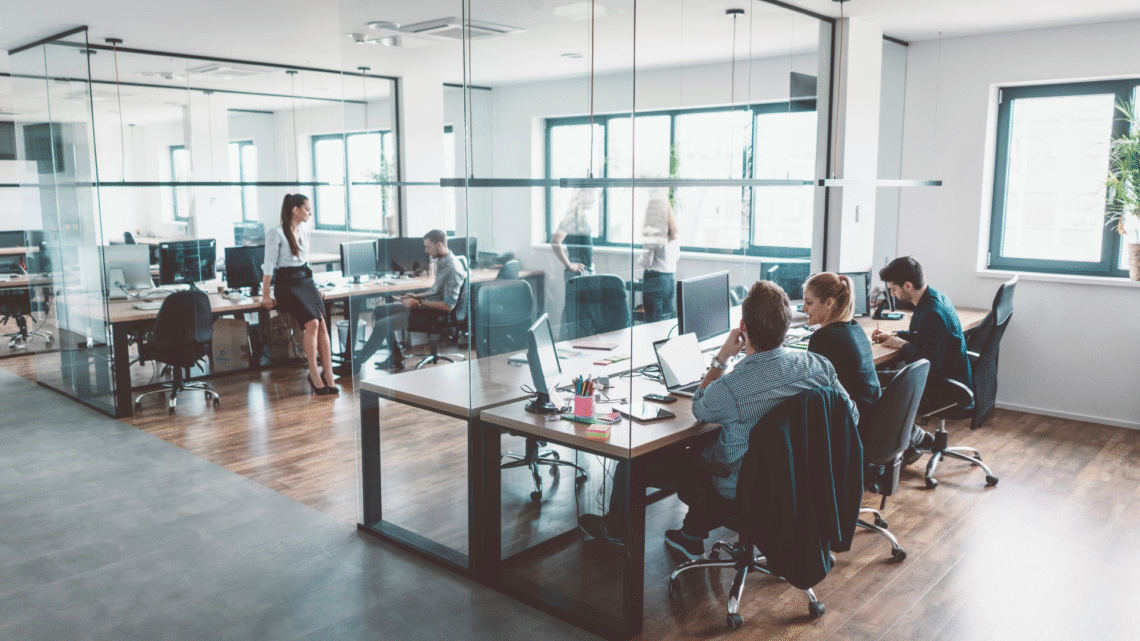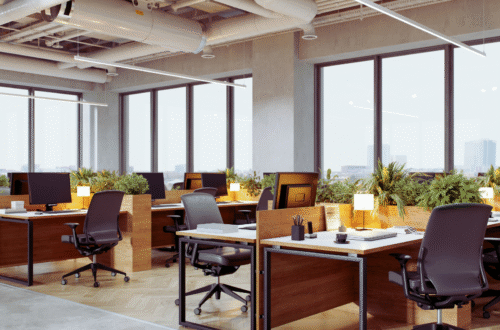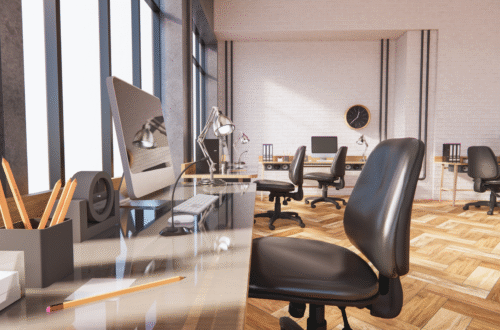
How to Personalise Your Office Space Without Overcrowding: Creating a Unique Environment
Creating a personalised office space while avoiding overcrowding is essential for maintaining a productive environment. Incorporating careful design choices, such as selecting multifunctional furniture and curated decor, allows for expression without making the workspace feel cramped. You can enhance your work areas by thoughtfully choosing items that reflect your personality while retaining functionality.
Organising the office with specific zones can significantly improve efficiency. By dedicating areas for different tasks or activities, such as reading, working, or relaxed brainstorming, you can help avoid clutter. Storage solutions that blend seamlessly with the overall aesthetic can help maintain a clean and inviting atmosphere. Utilizing commercial cleaning services colorado springs, for example, can also be beneficial if the area is quite large and needs essential upkeep by professionals.
Incorporating greenery is another effective way to personalise a space without overwhelming it. Plants bring life into the office and can improve air quality, creating a refreshing ambience. The key to personalisation lies in selecting a few impactful elements that resonate with your style and meet practical needs, ensuring the office remains an inspiring yet functional space.
Establishing a Functional Office Layout
Creating a well-structured office layout enhances productivity while maintaining a comfortable environment. Key factors include analysing available working space, promoting collaboration without sacrificing privacy, and ensuring employee well-being through comfort-focused designs.
Analysing Available Working Space
To optimise an office layout, you must first assess the available area. This involves measuring the dimensions of the space and considering its shape. Identifying the locations of doors, windows, and electrical outlets is vital.
Creating a floor plan can help visualise the arrangement of furniture and workstations. Utilising software or graph paper can simplify this process.
It’s important to prioritise functionality, ensuring that all employees have access to the necessary resources. A well-planned space allows for efficient movement, reducing obstacles and promoting workflow.
Balancing Collaboration and Privacy
A functional office layout must accommodate both collaborative areas and private working spaces. Open office layouts encourage interaction and teamwork but can lead to distractions.
Incorporating designated collaboration zones allows teams to work together without disrupting others. These areas can consist of meeting rooms, breakout spaces, or even informal lounges.
For privacy, consider soundproof cubicles or designated quiet zones. This balance supports varying work styles while catering to individual needs.
Maximising Comfort and Employee Well-Being
Employee well-being significantly impacts productivity. A functional office layout should prioritise comfort alongside aesthetics.
Comfortable furniture, such as ergonomic chairs and adjustable desks, supports better posture and reduces fatigue. Arranging desks to allow natural light access can enhance mood and energy levels.
Incorporating plants and personal touches can also contribute to a positive atmosphere. Allowing employees to customise their individual spaces fosters creativity and a sense of ownership, enhancing overall satisfaction.
Personalising Your Office Without Creating Clutter
Creating a personalised office space can enhance employee satisfaction and productivity without sacrificing clarity or creating clutter. Thoughtful choices in colour, personal items, and elements reflecting company culture can improve the overall atmosphere.
Selecting a Cohesive Colour Palette
A cohesive colour palette sets the mood for an office. Choosing two or three primary colours and a couple of accent shades can unify the space.
Considerations:
- Functionality: Use calming colours like blues and greens for focus, while warmer tones can promote energy.
- Harmony: Ensure that the colours complement the existing furniture and decor to avoid a jarring effect.
- Simplicity: Limit bright accents to a few items, such as cushions or artwork, to prevent overwhelming the space.
This approach fosters a soothing environment conducive to work.
Introducing Personal Elements Strategically
Incorporating personal elements can make the workspace feel welcoming. Strategically placed items can express individuality without contributing to clutter.
Suggestions:
- Functional Decor: Choose items that serve a purpose, like stylish organisers, which can also reflect personal style.
- Limit Visual Noise: Opt for a few meaningful photographs or decorations rather than a large collection, ensuring each item has significance.
- Seasonal Changes: Rotate personal items occasionally to refresh the space, keeping the environment dynamic without overcrowding.
This practice maintains interest while respecting the workspace’s professional nature.
Integrating Company Culture into Design
Reflecting company culture in the office design can enhance employee connection and pride.
Key Elements:
- Brand Colours: Incorporate the company’s colours in office decor, such as wall art or furniture choices.
- Motivational Quotes: Tasteful placement of company values or inspiring phrases can motivate staff without added clutter.
- Community Spaces: Design areas for collaboration that echo the company culture, fostering teamwork without encroaching on personal space.
These integrations reinforce a sense of belonging, vital to fostering a positive workplace atmosphere.
Optimising Storage Solutions for an Uncrowded Space
Effective storage solutions can significantly enhance the functionality and aesthetic of an office environment. By employing smart storage options and efficiently organising common areas, employees can maintain an uncluttered workspace that promotes productivity.
Utilising Smart Storage Options
Implementing smart storage solutions is key to maximising space without overcrowding. Multi-functional furniture can serve dual purposes, such as a desk with built-in drawers. Floating shelves provide vertical storage while keeping floor space open.
Incorporate cabinets and storage bins that blend with the office decor. Consider transparent bins or colour-coded labels for easy identification.
Under-desk storage can free up essential surface space for work materials. This includes mobile drawer units that can be tucked away when not in use. Investing in these solutions enables an efficient workspace that is tidy and inviting.
Furthermore, for items that are not frequently used but still need to be retained, look for self storage units in your area for extra space. These units can offer a secure way to store excess office supplies, equipment, and documents, thus freeing up workspace.
Organising Reception and Common Areas
Reception and common areas require clear organisation to present a professional image. A well-designed reception desk should include integrated storage for essential documents and supplies.
Regular decluttering is crucial; out-of-date materials and unused items should be removed. Using a combination of magazine racks and file holders can help keep this area organised and welcoming.
Creating designated zones for different activities (waiting, socialising, working) ensures that these spaces feel intentional and well thought out. Clear signage can guide visitors and employees alike, reducing chaos and enhancing the overall atmosphere of the office.
To keep those zones consistently presentable, establish a cleaning cadence that addresses both daily touch-ups and deeper weekly care for high-traffic areas. Focus on high-touch surfaces, floor maintenance, and entryway upkeep to preserve the professional look of reception and common spaces while reducing allergens and germs.
Offices can benefit from providers that offer customised schedules and checklists tailored to their traffic patterns — consider commercial cleaning in Brentwood, CA, or elsewhere, as a resource for reliable, routine cleaning and rapid-response support during busy periods. This practical pairing of zoning and targeted cleaning helps ensure first impressions remain consistently positive.
Enhancing Light and Reducing Distractions
To create a productive office space, it is vital to focus on light and minimise distractions. Proper lighting can enhance mood and productivity, while a well-managed environment reduces interruptions that hinder focused work.
Maximising Natural Light
Natural light significantly boosts mood and energy levels. Positioning desks near windows allows employees to benefit from sunlight. If modulating glare is necessary, consider using sheer curtains.
Using reflective surfaces, such as mirrors, can help distribute light throughout the space. This technique brightens dim areas without additional lighting fixtures.
Incorporating plants can further improve the atmosphere. Plants not only enhance aesthetics but also improve air quality, contributing to a healthier workspace.
Choosing Appropriate Artificial Lighting
In instances where natural light is limited, selecting suitable artificial lighting is crucial. LED lights are energy-efficient and can be adjusted to provide a bright, clear workspace without causing eye strain.
Consider implementing layered lighting, combining ambient, task, and accent lights. For instance, desk lamps focused on work surfaces can provide necessary illumination without overpowering overhead lights.
Dimming switches can also be beneficial. This allows you to adjust brightness levels according to the task at hand, fostering a more adaptable and comfortable environment. When planning an office setup, options from reliable sources like Bay Lighting can offer practical examples of how to achieve consistent brightness and energy efficiency in workspaces.
Minimising Noise and Visual Distractions
Creating a quieter office promotes concentration. Using sound-absorbing materials, such as carpets and acoustic panels, can help significantly reduce noise levels.
In addition to addressing sound, managing visual distractions is essential. Clutter can lead to a chaotic environment. Implement storage solutions to keep surfaces clear and organised.
Digital distractions can also disrupt productivity. Encouraging employees to turn off unnecessary notifications on devices can streamline focus during work hours. Implementing periodic ‘quiet hours’ can create an atmosphere conducive to concentrated effort.





